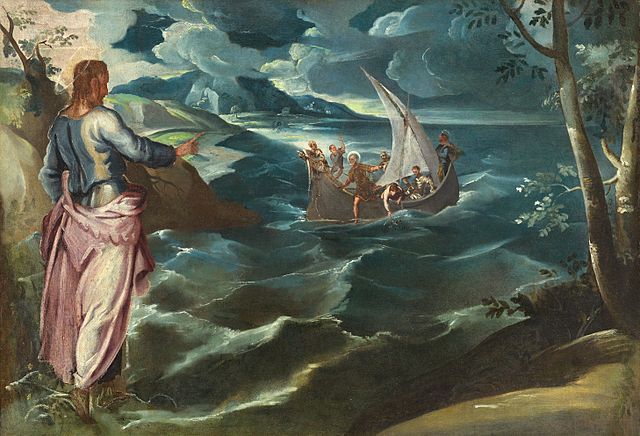St. George Statue Unrestored, Milton’s Latin Verse, and Lincoln’s Bible

According to Nelson Algren, the promise of American capitalism was a lie and the simple-minded middle class had been fooled. He believed the writer’s task was to wake the reader from his moral stupor. Too bad his books are overwritten and dull: “Algren said that he worked on The Man with the Golden Arm for two years before he came upon the idea of making Frankie Machine a junkie, when it all came together. But does it really come together? The Man with the Golden Arm is a novel quite without pace. Algren’s lyrical flights, deployed throughout the book, ruin any narrative flow the book might have had. Throughout, characters wax poetically in ways they are most unlikely to have done outside an overwritten novel. Frankie’s badgering wife Sophie, for example, looks out the window of her apartment to note ‘moonlight that once had revealed so many stars now showed her only how the city was bound, from southeast to the unknown west, steel upon steel upon steel; how all its rails held the city too tightly to the thousand-girdered El.’ (Without the El, one sometimes thinks, Algren would have been out of business.) Three more paragraphs in the same vein follow: ‘The city too seemed a little insane. Crippled and caught and done for with everyone in it.’”
Milton’s Latin verse: “Like any precocious youth, Milton’s allusions show his wide and deep reading; but with Juster’s notes on Milton’s biblical and classical references the student should not have too much difficulty. At 718 verses, the book of elegies is about the perfect size for a lower-level advanced Latin seminar for undergraduates. But with Juster’s lucid translations, notes, and introduction, the book should equally find its place in any course considering the poetry and thought of John Milton or English literature of the period.”
Alice Oswald will be the next Oxford University Professor of Poetry.
Lincoln’s late Bible goes on display: “The Bible remained in Noyes’ family, unbeknownst to historians, for 150 years. But the precious the artifact has now been gifted to the Abraham Lincoln Presidential Library and Museum in Illinois, where it went on display for the first time this week . . . Experts believe that the Bible was presented to Lincoln in 1864, one year before his death, when the president visited Philadelphia to raise money for the medical care of Union soldiers.”
Statue of St. George is “unrestored”: “Specialists in Spain spent $34,000 to fix a church statue that had ended up looking like Tintin after a paint job.”
Let’s stop blaming Boomers: “From the early years of the 21st century, the idea that old people have screwed up the world has become the received wisdom. From economic crisis to environmental catastrophe, from the Brexit vote to the election of Donald Trump, from the lack of affordable housing to the persistence of ‘unaffordable’ pensions, blame for a whole range of presumed social evils is levelled at that catch-all category — ‘the older generation’.”
Essay of the Day:
In The Fortnightly Review, Hoyt Rogers writes about the profound influence that Tintoretto has had on modern art on the occasion of an exhibit of his work in Washington:
“Of particular satisfaction to me is that this new transatlantic tribute features a painting I have always considered one of Tintoretto’s greatest, though it has generally gone unnoticed not only by the tourist hordes who tramp through Venice, but also by the majority of educated visitors (see the ‘Heard in Tintoretto’ section of this portfolio, second image). During the fourteen months I have spent in the Serenissima over the past decade, I have usually had the canvas all to myself. Tucked away in a dim side-chapel of the Church of San Trovaso, and rather small for a Tintoretto, it portrays the Last Supper as an unremarkable, almost everyday scene. The early date of its creation, 1563-1566, lends it a signal importance: in my modest opinion as an art-lover, rather than an art historian, it should be counted among the turning points of Western painting. A diminutive, ghostly inset of the Holy Family introduces the only overtly spiritual note, though even that tiny vignette seems like little more than a distant reminiscence. In the jumble of a dingy room, rough-hewn men sit around a humble meal, their haloes well-nigh invisible. One of them reaches behind him for a jug of table-wine, set casually on the floor. A mischievous cat plays nearby, and a rustic, straw-seated chair—identical to those Van Gogh will later depict—lies overturned in the foreground. The dog-eared books piled in the right-hand corner could imply several interpretations, such as the fulfilment of Hebrew Law or the future propagation of the Gospel; but on the surface, they merely reinforce the sense of disarray. Such an unvarnished image certainly adumbrates the naturalism of Annibale Carracci; yet by fusing earthiness with tenebrism, it also foreshadows the plebeian chiaroscuro of Caravaggio, three or four decades into the future. As I stood before the canvas one morning with a Venetian friend, the canon of the Orthodox cathedral, he shook his head in dismay. ‘Yes,’ he sighed, ‘this is the beginning of the end.’”
Photo: Dogs pull a sled on water-covered sea ice in Greenland
Receive Prufrock in your inbox every weekday morning. Subscribe here.
Comments